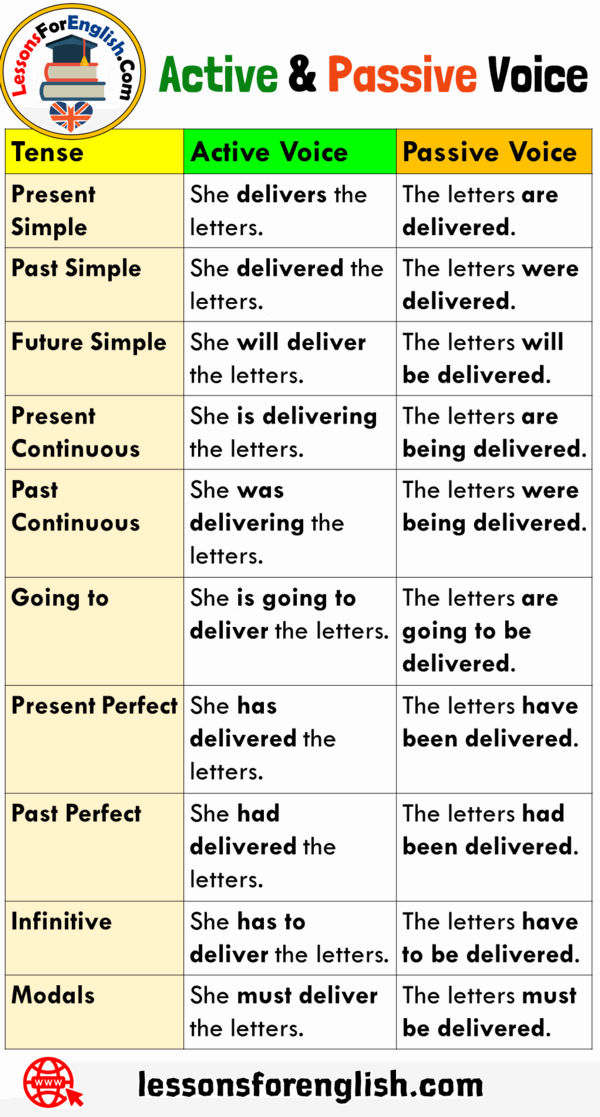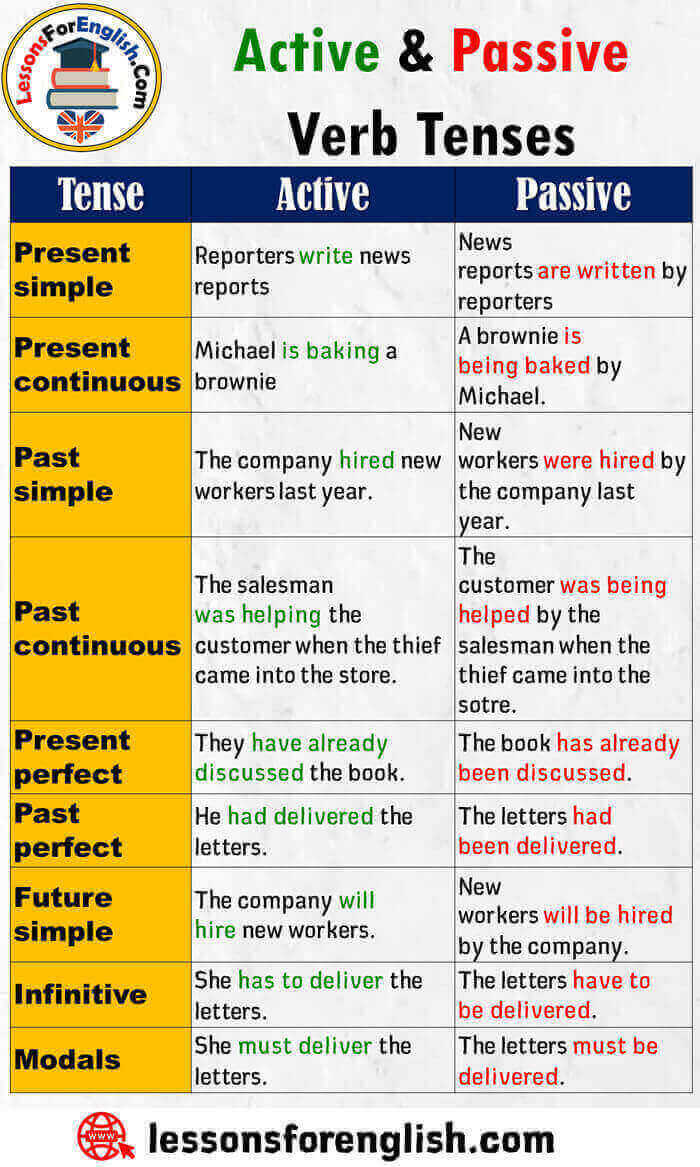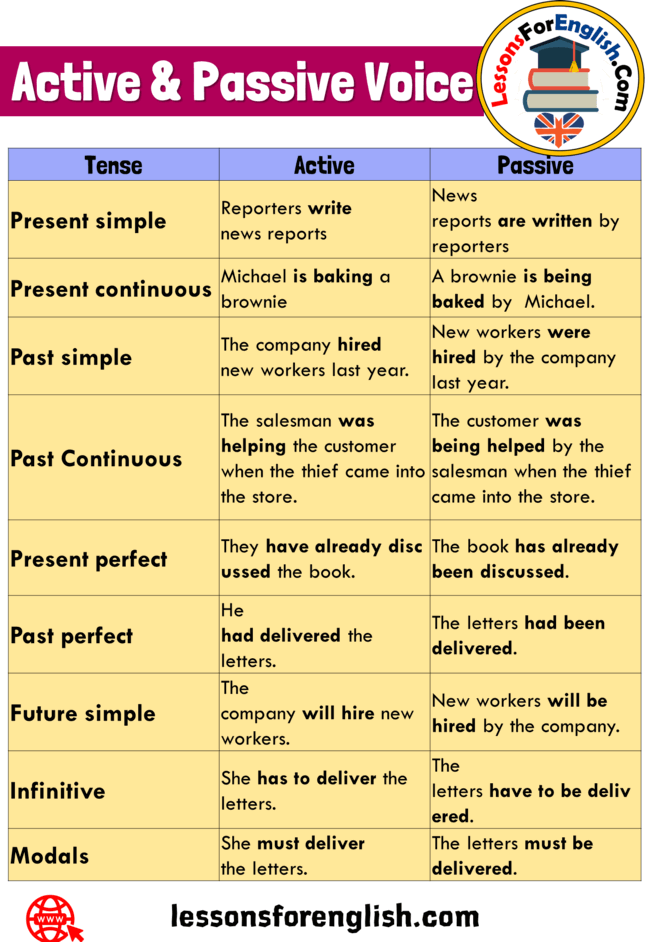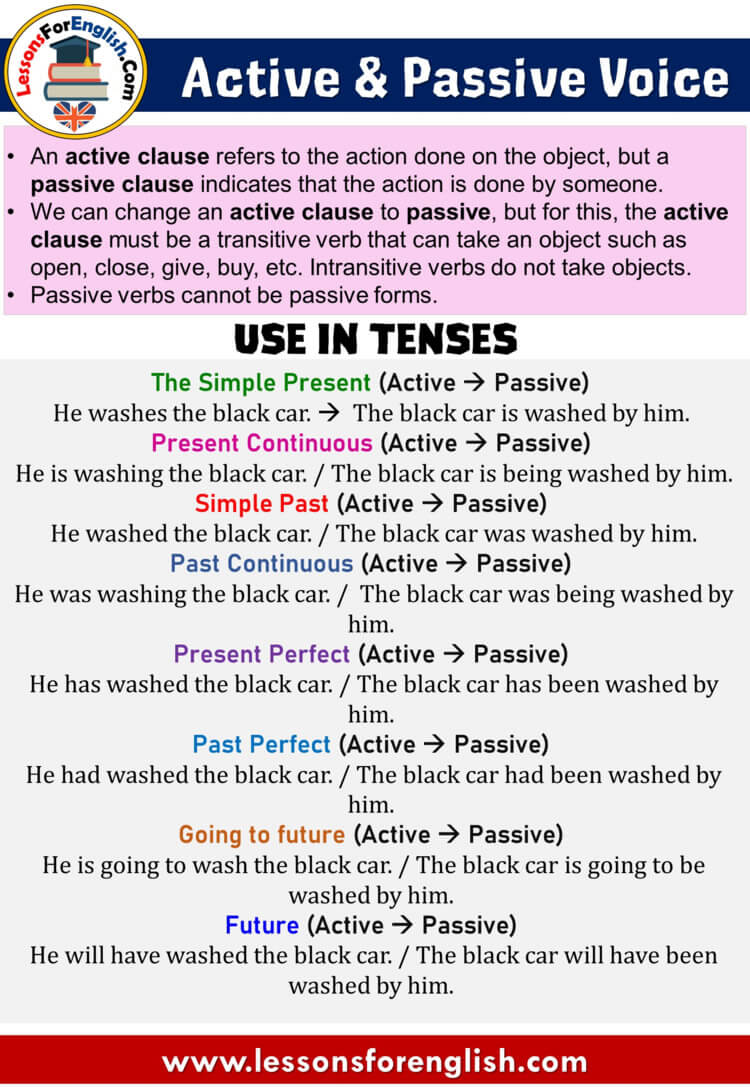Active and Passive Voice Examples with Answers and Definitions

Table of Contents
Active Passive Voice
Active Voice and Passive Voice, which are often quite complex for all students in the process of learning English, are known as a grammatical subject that you can easily overcome by regular work and practice, contrary to popular belief. But in order to learn about this topic, you must first understand the differences between Passive Voice and Active Voice. So let’s start looking at the Active Passive Voice lecture that we have prepared for you.
Difference Between Active Voice and Passive Voice
Active Voice is used to express an action performed by the subject, while Passive Voice is used to express that something is done by someone or someone. For example;
- Active Voice: You do your homework every day.
- Passive Voice: Your homework is done by you every day.
Note: As can be seen from the example, objects with Active Voice become subjects in Passive Voice sentences. Because the important point in the Passive Voice structure is the event that occurs, the person who performs the action does not matter. However, when you are asked to use both a Passive sentence and specify the person who performed the event, or where it is not clear who did it from within the sentence, the subject contained in the Active sentence is indicated by adding ‘by’ in the Passive sentence. Another point to consider when translating an Active Voice sentence into a Passive Voice sentence is to find the object exactly in the sentence. Note that in this part, which is the point that most students confuse the most, the object is likely to consist of more than one word.
Positive Sentences in Passive Voice
- Subject + to be + v3 + by
In the positive sentence pattern of Passive Voice, the octet by, which indicates who is doing the action, is optionally used. For example;
- This laptop was repaired by you.
- This laptop was repaired.
Negative Sentences in Passive Voice
- Subject + to be + not + v3 + by
In the Passive Voice negative sentence pattern, the octet ‘by’ is optionally used, as in the same positive sentence structure, indicating who is doing the action. For example;
- This laptop was not repaired by you.
- This laptop was not repaired.
Questions Sentences
- to be + subject + v3 + by
In the Passive Voice question sentence pattern, the octet by, which indicates who is doing the action, is optionally used, as in the same positive and negative sentence structure. For example;
- Was this laptop repaired by you?
- Was this laptop repaired?
When should Passive Voice be Used?
Although the sentences established with Active Voice are more understandable, this does not mean that you should never use Passive Voice. For example, it allows the addition of doubt to a detective story. If you don’t want to explain who the killer is, you say, ‘the killer was killed in a serial manner.’ Passive Voice is also useful in such situations if you don’t know who is performing the action. “The shop was demolished,” a newspaper report said, although it is not yet known who demolished the shop.


